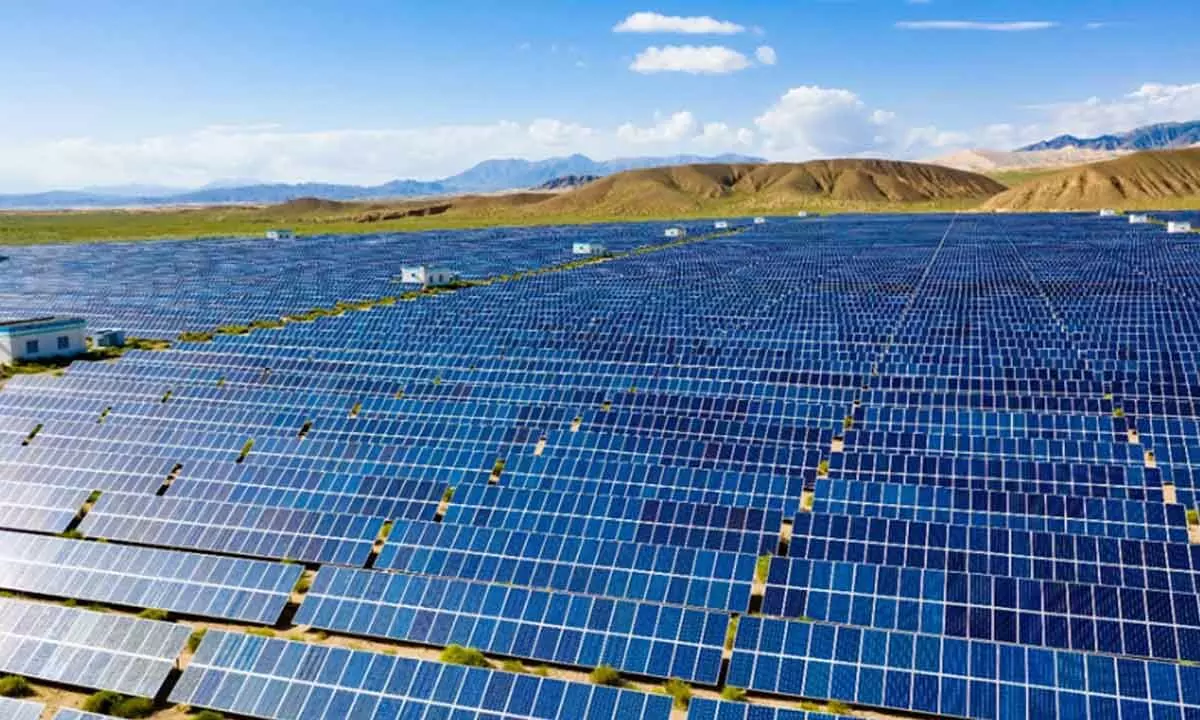New solar projects poised for big gain as module prices fall: CRISIL report
Share :

A steady decline in the price of solar modules since October 2022 will boost the internal rate of return (IRR) of 45 GW utility-scale solar projects awarded since fiscal 2021 and this, in turn, will propel solar capacity implementation to its fastest annual pace of 16 GW during the current financial year, according to a CRISIL report released on Tuesday.
New Delhi: A steady decline in the price of solar modules since October 2022 will boost the internal rate of return (IRR) of 45 GW utility-scale solar projects awarded since fiscal 2021 and this, in turn, will propel solar capacity implementation to its fastest annual pace of 16 GW during the current financial year, according to a CRISIL report released on Tuesday.
Implementation had slowed in 2021-2022 and 2022-2023 due to the Covid-19 pandemic-related disruptions and challenges stemming from the efforts to protect the Great Indian Bustard bird, for which extensions were given by the relevant authorities.
That, along with an upsurge in module prices, had delayed execution, the report by the analytics company points out.
Now, with module prices once again falling, the end of pandemic-related disruptions and clarity regarding the protection process for the Great Indian Bustard (bird diverters to be installed on extant and new low-voltage transmission lines) execution is expected to be hastened by 2025-2026, the CRISIL report states.
The trend of falling module prices had reversed in the last quarter of fiscal 2021 as higher prices of key raw materials such as polysilicon and aluminium drove up the cost. This impacted the returns’ profiles of 20 GW of projects auctioned in fiscals 2021 and 2022 — included in the 45 GW of solar project pipeline cited above — as developers had factored in the falling module prices when bidding for capacities. Module prices are typically tied up closer to the installation period of 6-9 months.
“If implemented as per schedule, the average IRR of ~20 GW projects auctioned during the 2021 and 2022 financial years could have fallen to as low as 5 per cent, with some even becoming unviable on a standalone basis. However, the pandemic-linked extension in the scheduled commissioning dates provided relief to these projects, giving developers a chance to defer module purchases,” said Ankit Hakhu, director, CRISIL Ratings,
Now that module prices have softened — down 30 per cent as of September 2023 compared with the average last fiscal — project IRRs may improve by 300-500 basis points (bps) to 9 per cent, on average.
“Softer module prices will also benefit 25 GW of capacities bid during and since fiscal 2023. These 25 GW of projects had higher bid tariffs (Rs 2.5-2.7 per unit) compared with those awarded in prior fiscals (below Rs 2.5 per unit), as they factored in higher module costs, and should see their IRR improve 200-300 bps now that module prices have eased,” the report cited Varun Marwaha, Associate Director, CRISIL Ratings, as saying.













